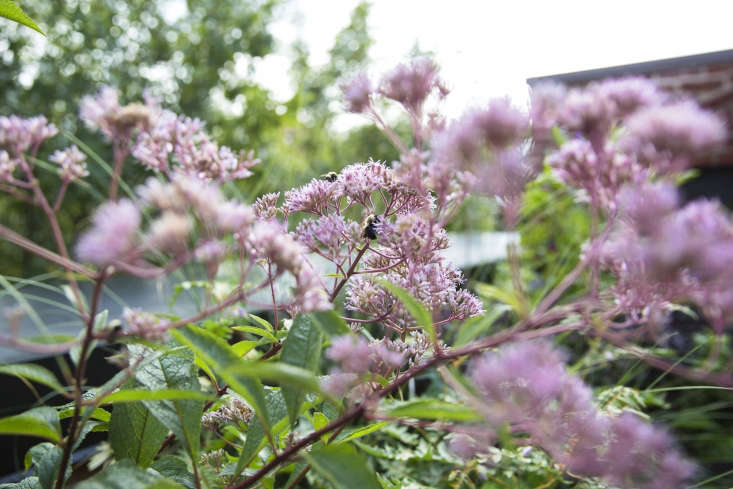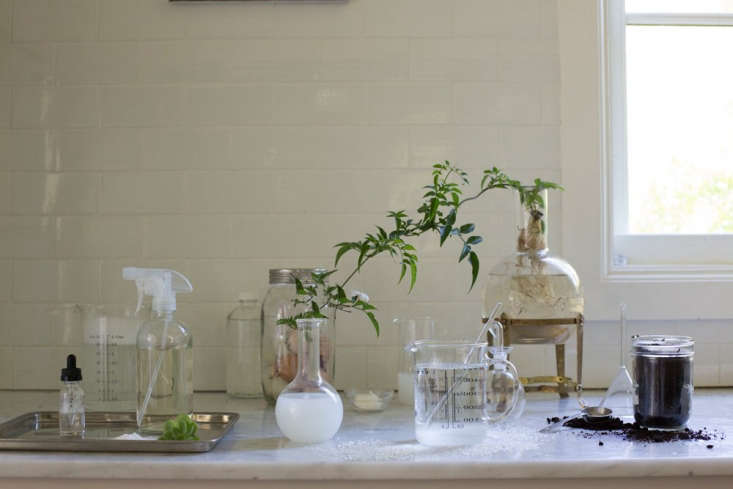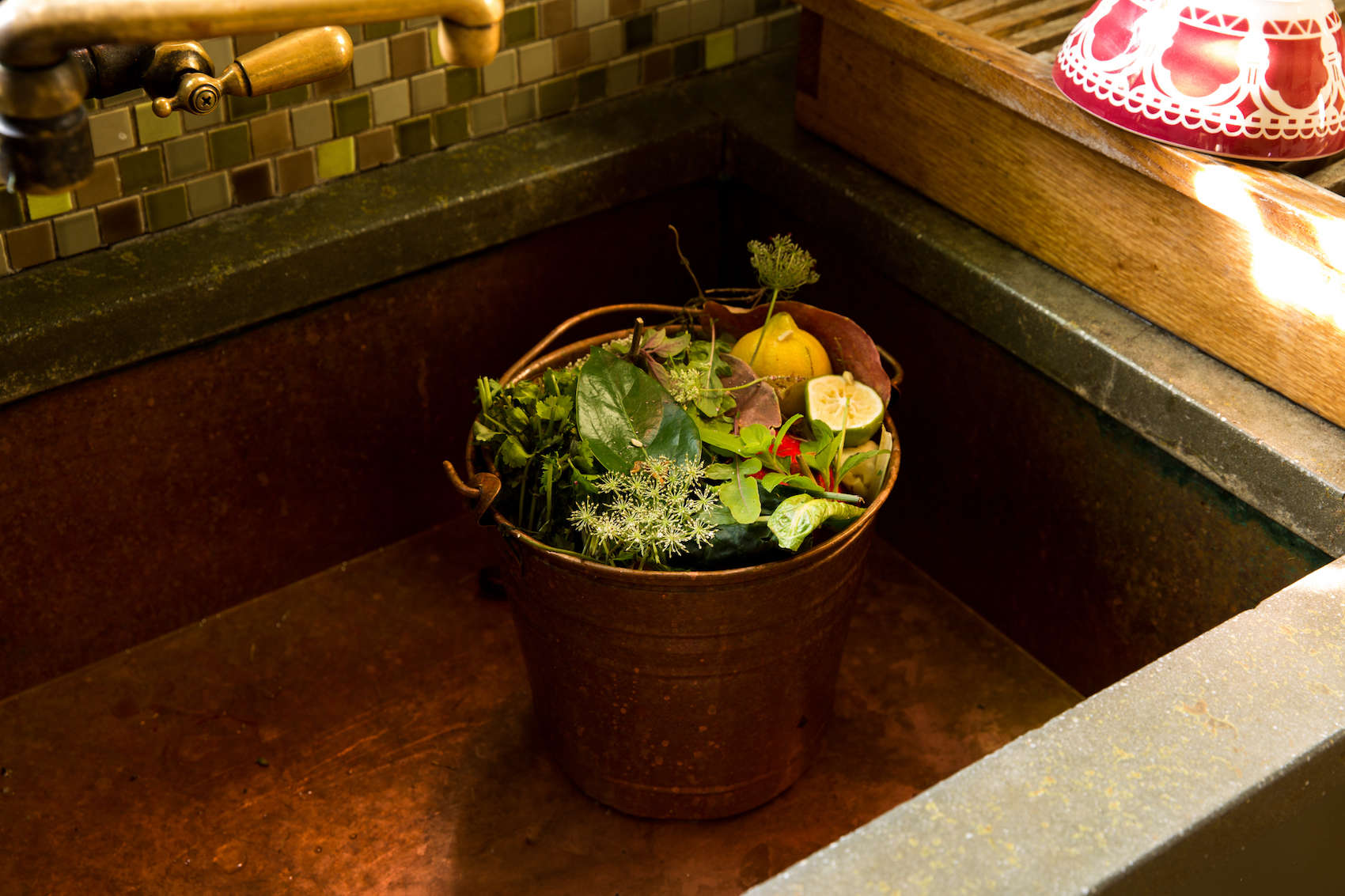As a gardener, you have joined the fight against global warming. Your garden is contributing oxygen to the atmosphere and providing sanctuary for birds, wildlife, and pollinators.
And don’t think you have to sacrifice beautiful flowers to the battle. With a thoughtful mix of natives and low-water plants, a home garden can remain an oasis of calm and loveliness even as it combats climate change, says Melissa Ozawa, gardens editor at Martha Stewart Living.
Remember that no matter how small, a garden can make a difference. “Don’t think just because you only have three small plots outside on a windowsill that it isn’t helping. It is helping,” says Ozawa.
Here are Ozawa’s top 10 tips for climate change gardening:
Plant Natives

Says Ozawa: “Native plants have been evolving since long before we were on the scene and can handle conditions like drought and extreme temperatures.”
On weekends, Ozawa gardens a couple of hours’ north New York City. There the native flowers include asters, Joe Pye weed, and phlox.
Pamper Pollinators

Even the smallest city garden can provide respite for butterflies and bees. On a front stoop, plant a container garden with pollinator plants like gaura, milkweed, and echinacea. “My planter is small enough that I have a very big watering can,” she says.
Tip: “When I water a pot, I give it maybe two or three big watering cans worth of water to really saturate the soil because that helps root development. In general, you want to water less frequently but deeper,” she says.
Rip Up the Lawn

Turf grass is a water hog; it needs to be watered to a depth of 1 to 2 inches of water every week. (To calculate how much water you are using, use this rule of thumb: every square foot of lawn requires .62 gallons of water to water it to a depth of 1 inch. An average size backyard is one-fifth of an acre, or 8,712 square feet, and needs from 5,400 to 10,800 gallons of water per week.)
Ozawa recommends visiting local native gardens to find inspiration for lawn alternatives. In California, for instance, the Theodore Payne Foundation for Wild Flowers and Native Plants sponsors tours of native gardens. In Austin, Texas, the Lady Bird Johnson Wildflower Center has lists of native plants and suppliers.
“In New York, the NY Botanical Garden in the Bronx and the Brooklyn Botanic Garden both have native plant collections,” says Ozawa. For more, see A New Look at Native Plants on Martha Stewart.
Feed the Birds

“In the fall, leave seed heads and grasses in place so birds can eat seeds and animals can use parts of the plants to build dens,” says Ozawa. “Wait to cut back everything until late winter.”
Tip: Use the Audubon Society’s Native Plant Finder to choose bird-friendly plants for your garden. Enter your zip code to learn which native plants will attract specific kinds of birds.
Ease Up on the Gas

Be Chemical-Free

“Don’t use chemicals in the garden because the chemicals in fertilizers, weed killers, and pesticides go into the ground and harm the wildlife, the fish, the insects,” says Ozawa.
Smart Irrigation Systems

“New in-ground watering systems have sensors on them to tell you when to water and not to so you don’t waste water,” says Ozawa.
Tip: Water your garden early in the morning before the sun gets too hot. “Don’t water at twelve o’clock in full sun when most of the water will evaporate,” says Ozawa.
Collect Rainwater

“Put in a rain barrel to collect rainwater and use it when needed,” says Ozawa. “And don’t overlook gray water.” Tip: Put a bucket in the shower to catch water and use it to irrigate garden plants.
Compost Wisely

You don’t need a sprawling garden to make compost (or a huge bin to brew it). Apartment residents like Ozawa’s brother and sister-in-law “have a worm compost bin in their tiny, tiny New York City apartment,” she says. “They mix in shredded bills papers and papers with vegetable scraps. They’re not getting a ton from it, but they’re getting enough to give me big Ziplock bags of it to put in my garden.”
Have a Houseplant

“Regardless of the size of your space, it’s important to have a plant—indoors if not out,” says Ozawa. “And any time you put planters outside, it helps the environment by contributing oxygen.”
Gardens matter. Here are more ways to use yours to help the environment:
- Native Plants: 10 Alternatives to Garden Invaders.
- Object of Desire: Bee Hotels.
- Native Perennials for a Shade Garden: 9 Favorites for a Cold Climate.













Have a Question or Comment About This Post?
Join the conversation (4)